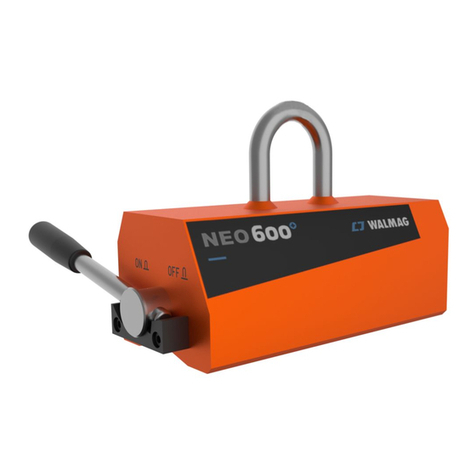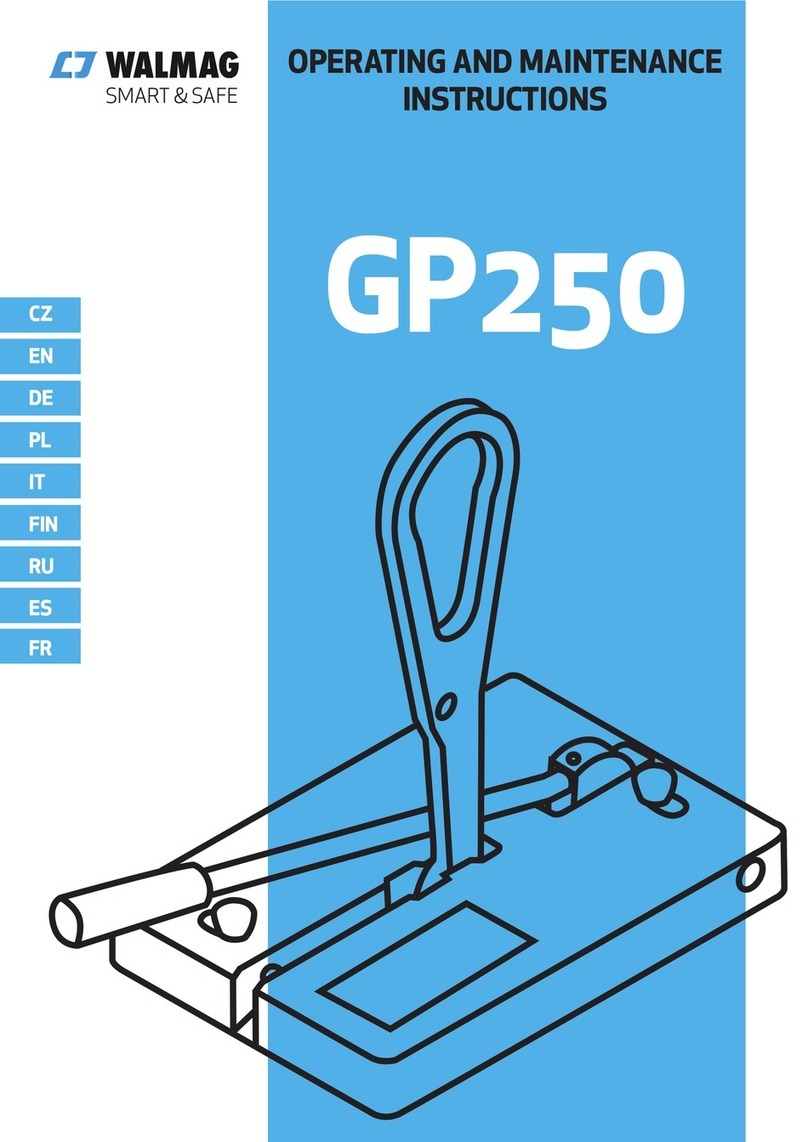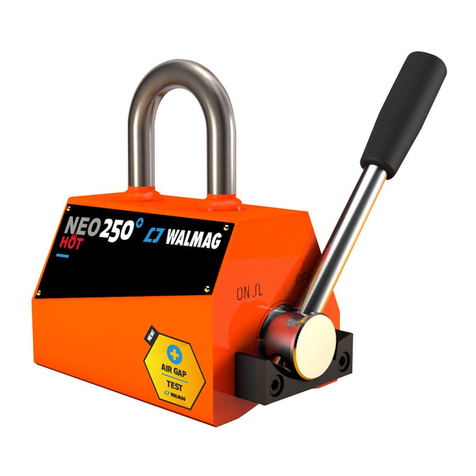
SAFETY
Warning for incorrect operation
or action that could have physical
injury or damage to the equipment
as a result.
Safety instructions
01. Never use this magnet before these
instructions have been read and understood.
02. Persons tted with a pacemaker or other
medical equipment should never use the
magnet without rst consulting a medical
specialist.
03. Never remove warning or instruction
plates from the magnet.
04. Always wear safety glasses, gloves,
protective footwear and a helmet.
05. Never stand or move under the load.
06. Never transport over or past people.
07. Never use the magnet as an aid to lifting,
supporting or transporting persons.
08. Warn bystanders when beginning to lift
the load.
09. To prevent the hook from slipping out
of the eye hook always use a lifting hook
equipped with a safety latch.
10. Magnet is ON all the time. Risk of
involuntary attraction of steel objects:
a. in between handling operations
always keep the magnetic face away
from steel objects;
b. never hold or carry the magnet with
your ngers on the magnetic face;
11. Ensure that the weight and dimensions
of the load to be lifted do not exceed
the maximum permitted values.
12. Never use a damaged or poorly operating
magnet.
13. Never use the magnet with dirty pole
faces (metal chips, rust, scale, dust,…)
14. Only break the magnet off when the load
has been placed on a stable surface.
15. Never lift more than one work piece at
a time with this magnet.
16. Never leave a hoisted load unattended.
17. The temperature of the load or
the surroundings must never exceed 180°C.
18. Never lift a work pieces which are smaller
than pole surface (foot print)
DETERMINE THE
WORKLOAD LIMIT (WLL)
The workload limit of type GP250
Horizontal = 250 kg
Vertical = 80 kg
The workload limit may become less as a
result of:
01. Air gaps between the load and the
magnet, caused by paper, dirt, paint, burrs,
damage, surface roughness etc. either on
the load or the magnet.
02. Thin loads. The thinner the load, the
lower the lifting capacity.
03. Length and width of the load. Long, wide
parts that hang outside the magnet, resulting
in an air gap. This is called the peeling effect.
04. The load material type. In general it
applies that: high alloy percentage = low
lifting capacity.
05. Some alloys are even totally non-
magnetic (e.g. stainless steel 304). The
values in the table on page 4 apply to St.
37 (S 235 JR). For other materials the lifting
capacity will be reduced to the percentages
below:
EN
Workload limit for various materials
H V
Material % kg kg
St 37 [S 235 JR] 100 250 80
E 295 [St 52] 96 240 77
Cast steel 90 225 72
Stainless steel 430 F 50 125 40
Cast iron 45 112 36
Nickel 10 25 8
For other materials consult your supplier.
06. Maximum work load limit is obtained
while magnet is in fully horizontal position
during the transport.
2




























